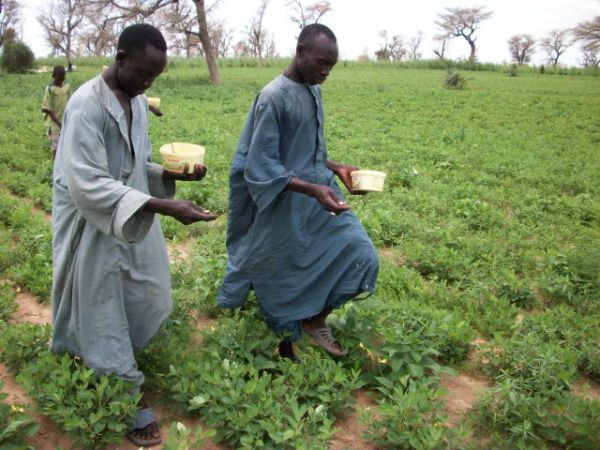The main aflatoxin-producing species is A. flavus. This contamination typically occurs before harvest and can worsen depending on storage conditions. Consumption of these crops when containing high aflatoxin levels can result in rapid death.
However, not all Aspergillus flavus produce aflatoxins—about 20% of the species are non-toxin producing and known as atoxigenic. Atoxigenic isolates can be used as biocontrol agents to reduce aflatoxin content in crops when they are applied before crop flowering. The isolates then reproduce and become dominant in the fungal populations of treated fields, reducing the amount of aflatoxin-producers. Aflatoxin biocontrol products containing atoxigenic A. flavus isolates have been developed for use in the United States, Italy and several African countries.
Recently a team of plant pathologists have developed an aflatoxin biocontrol product, Aflasafe SN01, for use in Senegal, which includes four atoxigenic isolates native to Senegal and distinct from active ingredients used in other biocontrol products in Africa and elsewhere. Tests conducted in important crop production areas of Senegal for 5 years in more than 500 fields found that this product is highly efficient in reducing aflatoxin contamination in groundnut and maize.
Continue reading at American Phytopathological Society
Image via American Phytopathological Society


